

Common Whitethroat
AGE – BEST CRITERIA:
2cy:

2cy May, showing variation in the juvenile PC. Note the fresh pre-breeding longest and shortest AL, while the central feather is more intermediately worn. This feather i too dense and fresh to be a juvenile, but separating post-juvenile feathers from early pre-breeding ones are difficult (and not necessary, since it is only the presence of juvenile feathers that are relevant for the ageing). [1ES23782]
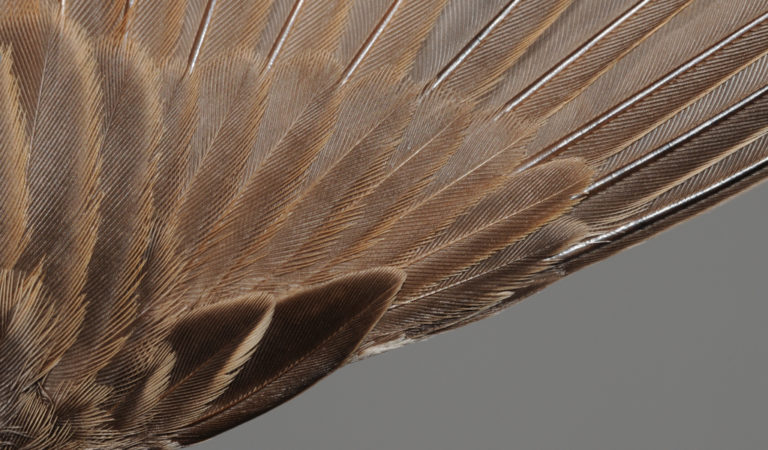
2cy May, showing variation. Here, all three AL feathers are pre-breeding and, hence, are not useful for ageing. Note also that the outermost two PC are more fresh and have been renewed during the winter (as have their corresponing PP). Such moult patten may be found in both age categories, but seem to be more common in 2cy. [1ES24625]
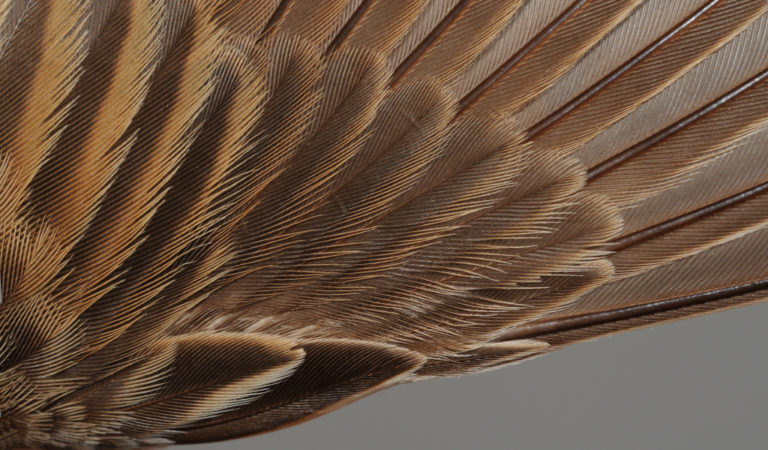
3cy+ (female) May. Adult post-breeding PC are generally slightly more dense and in better condition than juvenile, but differences are not always obvious. In 3cy+ birds the AL may show a moult contrast between fresh late pre-breeding or intermediately worn early pre-breeding or post-breeding feathers, but these contrast re not useful for ageing since also 2cy often showns the corresponing generations. [1ES23855]
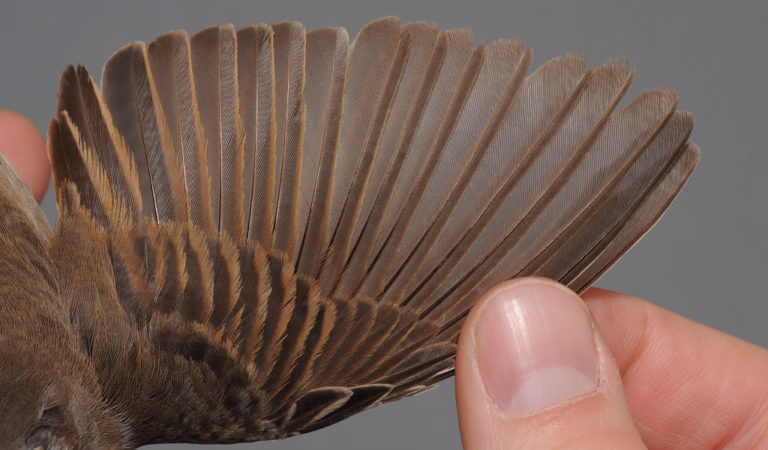
3cy+ May. Adult post-breeding PP and SS are generally better kept and slightly darker and denser than juvenile ones, but a few are more worn and less easy to judge.Tips of PP are generally more fresh and darker/denser than in 2cy (but a few are more worn and less easy to judge). Note the fresh pre-breeding P3 and S6. [1ES23766]
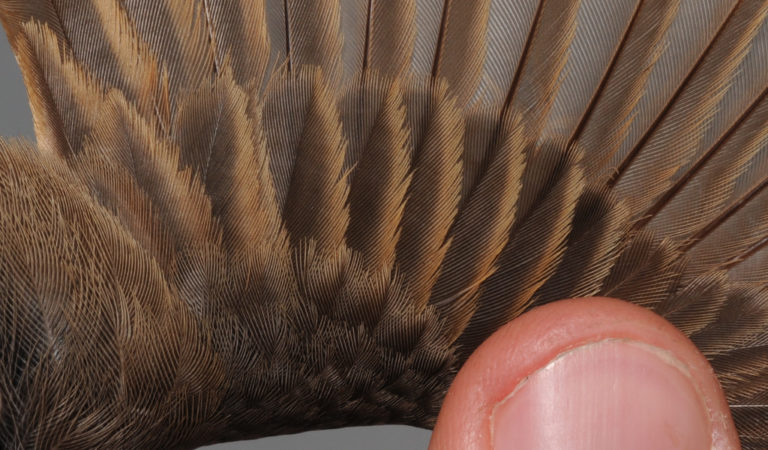
2cy (male) May. Most importantly, GC7 (just visible) is juvenile and very worn. Remaining GC are a mixture of late pre-breeding (GC10) and early pre-breeding or post-juvenile, not relevant in the ageing process. According to Jenni & Winkler (1994) only 16% of 2cy birds retain some juvenile GC. [1ET28181]
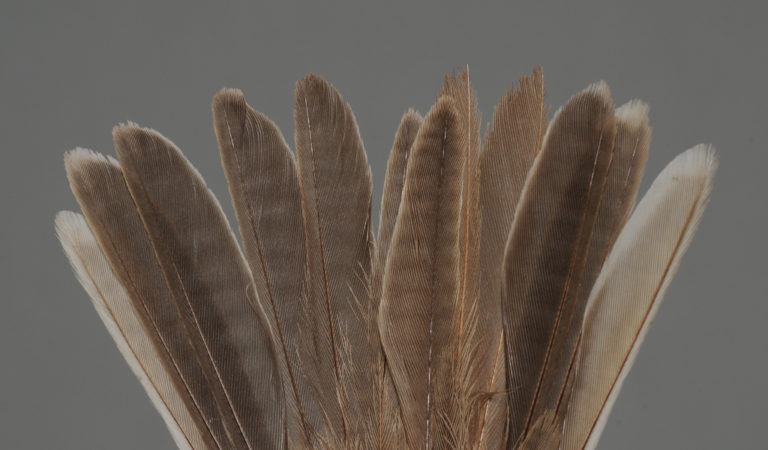
2cy May. Tails may be rather difficult to assess (esp. separation of early pre-breeding and post-breeding/post-juvenile generations, which all can be rather variable in wear). However, separating the mentioned generations is not necessary - it is only the presence of juvenile feathers that help the ageing process (proves the bird as 2cy). In this bird, right R2-3 are juvenile, while the rest are likely pre-breeding. [1ES24663]
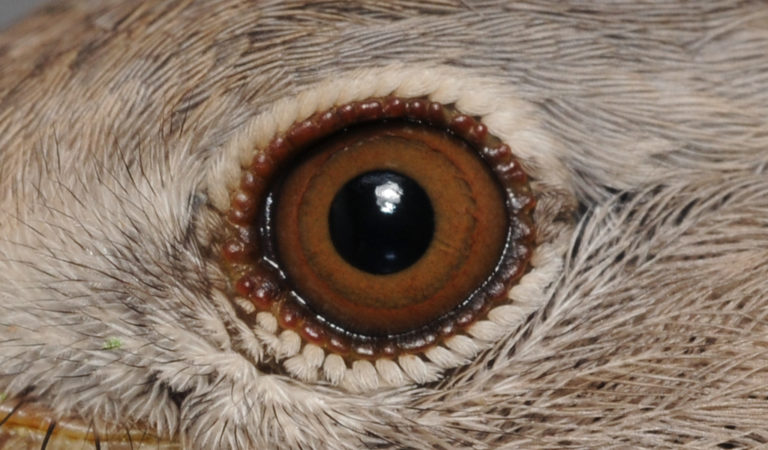
2cy (male) May. The colour of the iris of 2cy have developed during the winter and is generally adult like. The most brightly orange irises may perhaps be shown by 3cy+ only but this is difficult to judge without direct comparison of several individuals. Note also that there is an average sexual difference with more males showing the warmer orange irises. [1ET28182]
More Sylvia communis:
Sexing spring
Ageing autumn
Sexing autumn
Moult
Ringers’ DigiGuide is sponsored by: